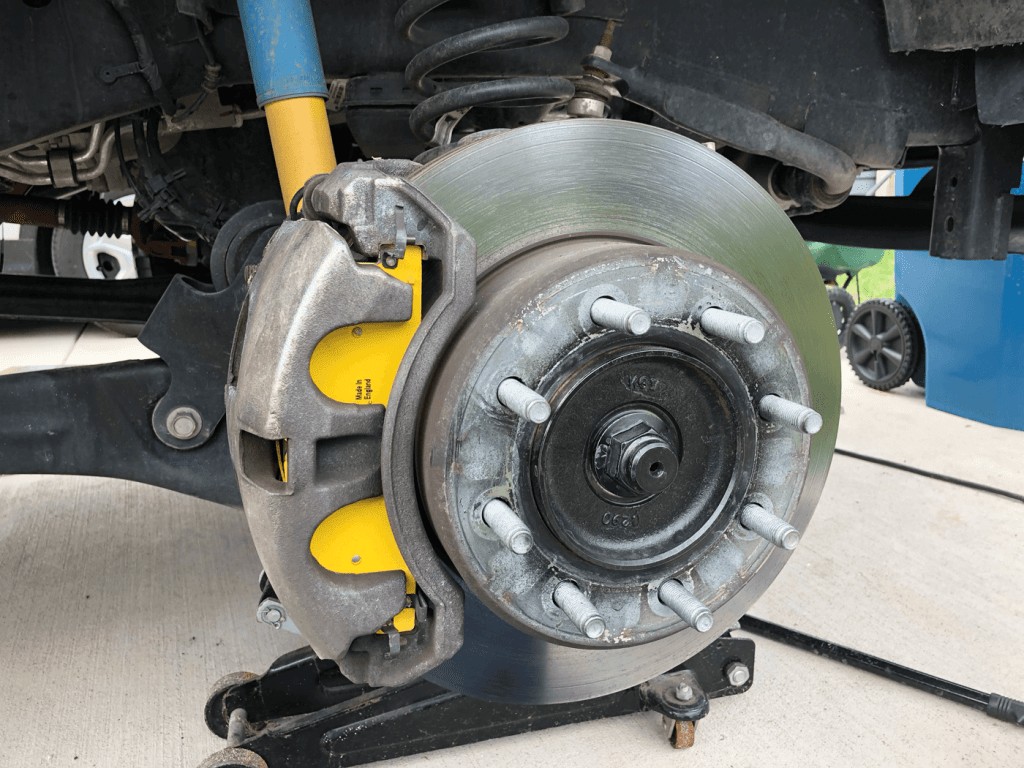Glazed brakes occur when the brake pad material hardens and becomes smooth, reducing friction and compromising braking performance. This article explores the causes, symptoms, and solutions for glazed brakes.
Understanding Brake Glazing
Brake glazing happens when excessive heat causes the friction material on brake pads to harden and develop a smooth, glassy surface. This reduces friction between the pads and rotors, hindering effective braking. A common analogy is trying to stop on ice skates versus running shoes; the reduced friction makes stopping much harder.
Causes of Glazed Brake Pads
Several factors contribute to brake pad glazing:
Hard Braking
Frequent, aggressive braking generates extreme heat, exceeding the brake pad material’s tolerance. This high temperature can cause the pad surface to melt and re-solidify into a smooth, glazed finish.
Riding the Brakes
Continuously applying light pressure on the brake pedal, often while descending hills or in stop-and-go traffic, generates consistent friction and heat buildup, leading to glazing.
Continuous Downhill Braking
Prolonged braking on steep inclines generates substantial heat due to constant friction. This sustained heat can easily glaze brake pads. Engine braking, achieved by downshifting to a lower gear, is a recommended technique to reduce reliance on brakes during descents.
Faulty Calipers
A malfunctioning caliper can cause uneven brake pad wear, leading to localized overheating and glazing on one side of the pad. Sticking calipers can also lead to continuous pad-rotor contact, generating excessive heat.
Symptoms of Glazed Brakes
Recognizing the signs of glazed brakes is crucial for addressing the issue promptly:
Reduced Braking Performance
The most obvious symptom is a noticeable decrease in braking efficiency. The vehicle may require longer stopping distances or feel less responsive to brake pedal pressure.
Squealing or Grinding Noises
High-pitched squealing or grinding sounds during braking, especially at low speeds, often indicate glazed pads. This results from the hardened pad surface struggling to grip the rotor.
Brake Pedal Vibration
A pulsating or vibrating brake pedal can signify uneven pad contact with the rotor, a common consequence of glazing. This can sometimes be felt through the steering wheel as well.
Visible Glazing
If you can visually inspect your brake pads, a shiny, smooth, or glassy appearance on the friction material confirms glazing.
Fixing Glazed Brakes
Addressing glazed brakes typically involves one of two solutions:
Brake Pad Replacement
Replacing the glazed brake pads with new ones is the most effective solution. This ensures optimal friction and restores braking performance. Consider upgrading to higher-quality pads with better heat resistance.
Resurfacing or Replacing Rotors
If the rotors have also been affected by excessive heat, they may need to be resurfaced or replaced to ensure a smooth and even braking surface for the new pads.
Preventing Glazed Brakes
Proactive measures can help prevent future glazing:
Moderate Braking Techniques
Avoid hard braking whenever possible. Anticipate stops and gradually apply brake pressure. On downhill grades, utilize engine braking by downshifting to reduce strain on the brakes.
Regular Brake Inspections
Periodic brake inspections can identify potential issues, such as worn pads or faulty calipers, before they contribute to glazing.
Quality Brake Components
Invest in high-quality brake pads with better heat dissipation capabilities to reduce the risk of glazing.
Conclusion
Glazed brakes compromise safety and performance. Understanding the causes, symptoms, and preventative measures empowers drivers to maintain their braking systems effectively and ensure safe driving conditions. Regular maintenance and mindful driving habits are key to preventing this issue and ensuring optimal braking performance.

